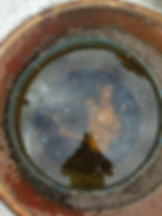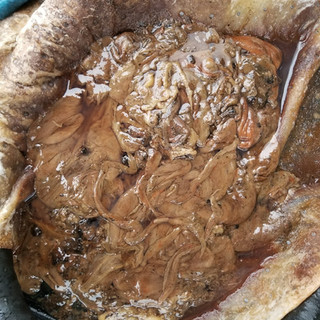The High Cost—and Costs—of Low Storage Tank Maintenance
- Katherine V.
- Apr 30, 2018
- 3 min read
There’s an old adage that goes, “the eyes are the window to the soul.” In our industry, the adage should read more along the lines of, “the tank accesses are a window to the tank.” I know what you’re thinking, they’re more like doors. But the point is, if your tank accesses look like they’ve seen better days, the same is true for the rest of your tank. And, oh yeah, for your fuel—the fuel which you will be selling in order to make money. And it comes as no surprise that Clean Fuels National crews encounter these less-than-ideal tanks and conditions of tanks each and every day in states throughout the country.
True, to the untrained eye, when a station’s canopy is well-light and clean, the pumps look great, the tank lids are correctly painted, and everything looks to be in order, everything seems to be in perfect working order and ready to service customers from dusk till dawn—an idyllic convenience store scenario indeed. But, that said, what lies beneath the surface is what causes potentially myriad problems—and anxiety, headaches, loss of sleep, et al—for station owners. Because, like we said, the window to your tank’s soul, are the tank accesses which can, more or less, lead to peaceful and tranquil days for station owners or days far less than peaceful and tranquil for them. Let’s take a look at a few examples of less-than-ideal tank accesses.

On the left is a monitor access that one of our crews encountered earlier this year at a service station in South Carolina. Admittedly, the site was experiencing fuel issues but were unsure as to why. As soon as the CFN crew removed the street lid and peered into the tank accesses, however, the immediate diagnoses was ascertained.

In this picture, the monitor cap is so badly corroded that it is unable to even seat properly—it simply cannot properly seal the monitor access which means you can’t close the tank. And if you can’t close the tank, water will infiltrate the tank, contaminating the fuel through a very nasty process known as Phase Separation. And, by now you have guessed it, your profits are (and no pun intended) being “pumped” right off the site AND out of your wallet and bottom line. Plain and simple, keeping a fuel system properly closed is the best way—and THE easiest way—to keep your fuel supply safe.

Similarly, if your submersible turbine pump (STP) wells appear to be drowning, the inside of your tank is probably soon to be drowning as well. We cannot stress this enough: water sitting in your tank accesses absolutely will become water sitting in your tank bottoms if you do not get it out as soon as possible.
And another thing: when we do finally get past the ugly accesses, this is a sampling of the nastiness our technicians find inside your tank: slime, microbial biofilms, piles upon piles of rust. And just where did that rust come from? Believe it or not, your equipment.
All that to be said, save your equipment; avoid the microbial bugs and nastiness; avoid very costly Phase Separation. Keep an eye on the water. Before things get ugly or wind up taking a huge bite out of both your pocketbook and your bottom lines, give Clean Fuels a call. We can complete a thorough inspection and help you pinpoint the weak spots in your fuel tanks and systems. Water is clever; it will find a way to infiltrate your tank regardless of the tank’s condition. Avoid the water, avoid the nastiness, avoid hemorrhaging dollar signs. Give Clean Fuels National a call today. You will be glad you did.








